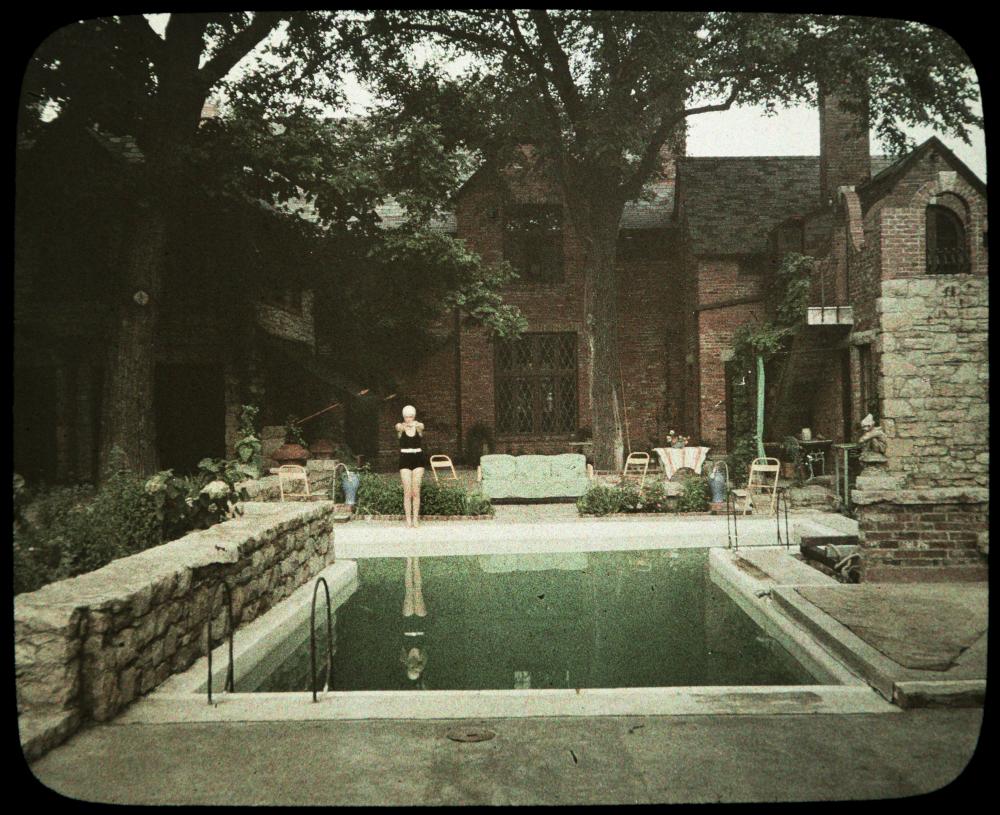Mary Rockwell Hook

Mary Rockwell Hook once described a troubling scene from an early period in her architectural career. In Paris, where she was a student at the Ecole des Beaux-Arts, she was forced to run to a waiting taxi and dive in to avoid being drenched by a mob of disgruntled male students pursuing her with water buckets. While confronting gender bias was not a new experience for her—she had also been the sole female architecture student during a previous year at the Art Institute of Chicago—her male counterparts in Paris were clearly unable to accept a talented, un-intimidated female in their midst. She would soon return to the United States, launch a prolific career as one of Kansas City’s most innovative architects, and come to be remembered as a pioneer among professional women.
While Hook met with resistance in a society unaccustomed to female architects, she also received much support, beginning with the encouragement and full resources of her parents. Born September 8, 1877, in Junction City, Kansas, she was the third of five daughters. Her mother, Julia Marshall Snyder, and father, Bertrand Rockwell, insisted on the highest standards of education for each of their daughters. Mary attended Wellesley College, graduating in 1900, and Mr. Rockwell’s successful career in the banking and grain elevator business in Junction City allowed the family to travel widely together.
Mary’s interest in architecture first asserted itself during these travels. On a 1902 trip around the world, she stayed at the seaside home of her uncle, General Adna R. Chaffee, who was then the military governor of the Philippines. She was amazed by the tropical mansion’s “outdoor living room” overlooking the ocean, and throughout her career as an architect, the use of such dramatic, almost porch-like rooms reaching toward the beauty of the outdoors would become a touchstone. During the many other travels of her 20s and 30s, Hook’s destinations included Sicily and the Italian peninsula, Switzerland, Singapore, and Ceylon, locales where she was able to absorb various architectural influences.
In 1907 the Rockwell family relocated from Junction City to Kansas City, and Mary set to work designing structures reflecting her unique spirit of experiment and joyful willingness “to try things out.” Among her most famous creations are several homes in the Sunset Hill area adjacent to Loose Park, designs in which she employed the detached main rooms, arched windows, open terraces, balconies, and courtyards for which she was known. Additional residences in the Kansas City area, Estes Park, Colorado, and Santa Rosa, California would become landmarks, as well. Throughout her career Hook also took on such diverse projects as the Pine Mountain Settlement School, which she designed for rural Appalachian youth in Harlan County, Kentucky, and “Whispering Sands,” a resort hotel and community designed as an artists retreat on Siesta Key, Florida.
In her husband, lawyer Inghram Hook, whom she married in 1921, Mary found a partner in creating a family, as well as another male who was supportive of her career. When she died on her 101st birthday in 1978, Mary Rockwell Hook was survived by two adult sons, four grandchildren, and six great-grandchildren.
The numerous buildings of her distinctive design will long remain as monuments to a life of singular creativity and willingness to challenge gender barriers.
A previous version of this article appears on kchistory.org: http://kchistory.org/content/biography-mary-rockwell-hook-1877-1978-arch...
This work is licensed under a Creative Commons Attribution-NonCommercial-NoDerivatives 4.0 International License.
